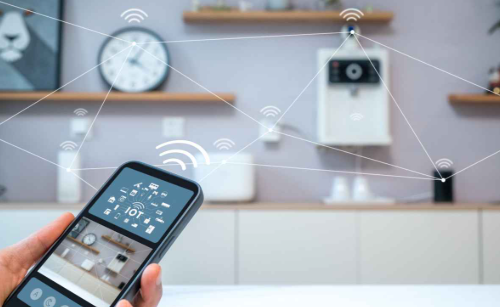
Introduction
Imagine waking up in the morning and your coffee machine has already brewed your favorite blend because your smartwatch told it you were awake. Your car warms up before you step outside, and your refrigerator automatically orders groceries you’re running low on. This is the Internet of Things (IoT)—a connected ecosystem of smart devices that communicate and work together to make life more convenient, efficient, and intelligent.
The IoT is no longer a futuristic idea; it’s happening right now, changing how we live, work, and interact with the world around us.
1. What Is the Internet of Things (IoT)?
The Internet of Things refers to the network of physical devices—like sensors, appliances, and vehicles—connected to the internet, collecting and sharing data in real time. These devices can monitor, analyze, and even act automatically based on information they receive.
IoT technology bridges the gap between the digital and physical worlds, turning everyday objects into “smart” tools that can think and respond intelligently.
2. How IoT Works
The IoT system is built on four key components:
- Sensors/Devices – Collect data from the environment (like temperature, movement, or location).
- Connectivity – Data is transmitted through Wi-Fi, Bluetooth, 5G, or other networks.
- Data Processing – The information is processed in the cloud or on local servers.
- User Interface – The results are displayed on your phone, dashboard, or app, allowing you to take action—or letting the system act automatically.
For example, a smart thermostat like Google Nest measures your home’s temperature and automatically adjusts heating or cooling for comfort and energy savings.
3. IoT in Everyday Life
a. Smart Homes
Smart home technology is one of the most popular uses of IoT. Devices like Alexa, Google Home, and smart bulbs let users control lights, locks, and appliances with voice commands or phone apps. This not only adds comfort but also saves electricity and enhances security.
b. Healthcare and Fitness
Wearable devices such as smartwatches and fitness trackers monitor heart rate, sleep patterns, and physical activity. Doctors can access this data to make more accurate health recommendations, and emergencies can be detected instantly—potentially saving lives.
c. Transportation
IoT enables connected cars that communicate with each other and with traffic systems. They can predict congestion, suggest alternate routes, and even call for help in case of accidents. In the near future, self-driving cars will rely entirely on IoT sensors and data networks.
d. Retail and Shopping
Smart shelves in supermarkets can track product inventory, while digital price tags update automatically. Even in e-commerce, IoT helps companies like Amazon track deliveries and improve warehouse efficiency.
e. Agriculture
Farmers are using IoT to monitor soil quality, water levels, and weather conditions. This data-driven approach improves crop yields and reduces waste, leading to more sustainable farming.
4. The Benefits of IoT
- Convenience: Automates daily tasks and saves time.
- Efficiency: Reduces waste and energy use by optimizing systems.
- Safety: Enables early detection of problems (like fire, gas leaks, or machinery failure).
- Cost Savings: Prevents maintenance issues and improves productivity in industries.
- Data Insights: Collects valuable data for smarter decision-making in business and government.
For example, cities equipped with IoT traffic systems can reduce congestion by up to 30%—saving millions in fuel and time.
5. Industrial Internet of Things (IIoT)
The Industrial IoT extends this technology into manufacturing, energy, and logistics. Machines in a factory can now communicate with each other, detect malfunctions before they happen, and alert engineers automatically. This predictive maintenance saves companies millions in repair costs and downtime.
6. Security and Privacy Concerns
As IoT devices collect personal data, privacy becomes a major concern. Hackers can potentially exploit weak security in connected devices. To prevent this, strong encryption, regular updates, and AI-based monitoring systems are being developed to keep users and networks safe.
Governments are also introducing regulations to ensure IoT devices meet strict cybersecurity standards.
7. The Future of IoT
By 2030, experts estimate there will be over 125 billion connected devices worldwide. Combined with 5G and AI, IoT will become even faster and smarter.
- In homes, devices will anticipate your needs before you even ask.
- In healthcare, IoT will power remote surgeries and real-time health tracking.
- In cities, everything from streetlights to waste bins will operate automatically for efficiency.
We’re moving toward a world where everything—humans, machines, and environments—is seamlessly connected.
Conclusion
The Internet of Things is transforming the world around us—making it more responsive, intelligent, and data-driven. Whether it’s smart homes, connected vehicles, or industrial automation, IoT is the silent force behind the digital revolution. As this technology grows, it will continue to redefine convenience, safety, and sustainability in our everyday lives.

Leave a Reply